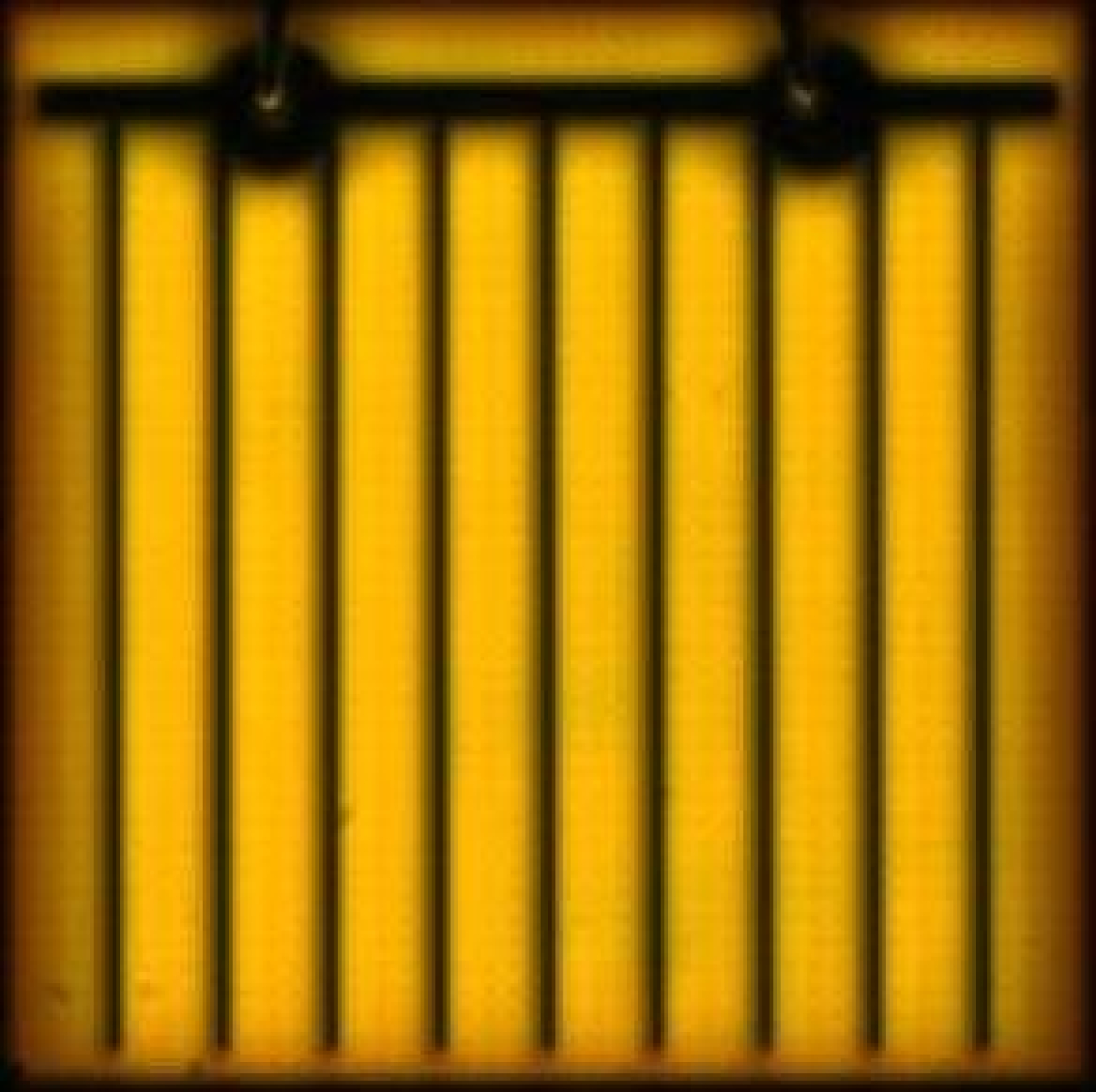
Light-up image of an amber LED. Two wire bonds are attached to the bond pads on top of the 1x1 square millimeter die.
With funding from DOE, researchers at Lumileds have achieved, in a laboratory prototype, an amber LED with external quantum efficiency (EQE) of 22% at current density of 35 A/cm2 and junction temperature of 25°C. Efficient red and amber LEDs are essential building blocks for next-generation lighting products, enabling the ultimate DOE efficacy targets and spectral design freedom in color-mixed white and color-tunable lighting applications. Direct-emitting red and amber AlInGaP-based LEDs offer a higher efficacy potential than phosphor-converted red and amber LEDs due to the absence of Stokes losses. While direct red LEDs (~610-620 nm) are already increasingly used in lighting applications, adoption of direct amber LEDs (~580-595 nm) has so far been limited by their lower power conversion efficiency, which is related to the fundamental difficulty in confining carriers to the quantum well at these shorter wavelengths. Lumileds is improving the efficiency of AlInGaP LEDs in the amber to red wavelength range by using strain-engineered cladding layers to enhance carrier confinement. The approach is based on advanced characterization of the atomistic and electronic nature of defects in strained AlInGaP layers, and the subsequent development of epitaxial growth conditions to eliminate these defects. Devices with improved design were fabricated at the end of the second year, resulting in an EQE of 22% in a finished amber LED with 1 mm2 die size at 350 mA drive current, exceeding the project target. With further optimization and refinement, the strain engineering approach employed here has a potential to achieve even higher EQE values. (September 2019)
Return to Research Highlights.

